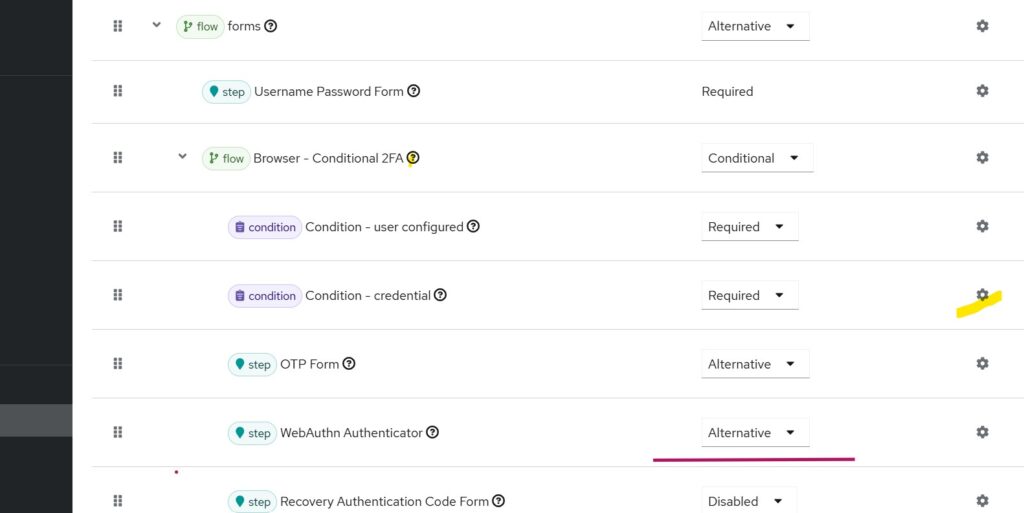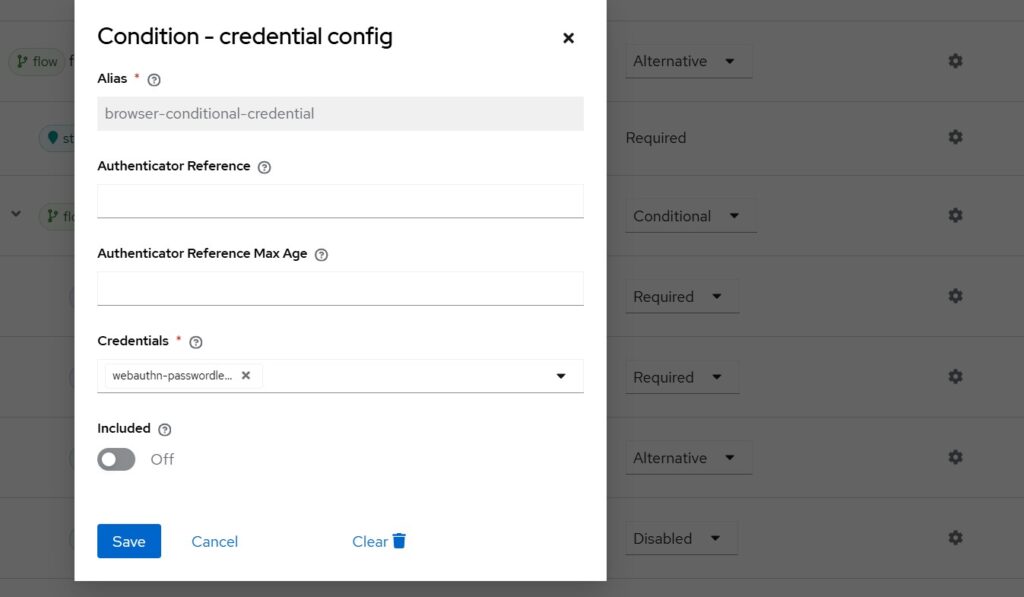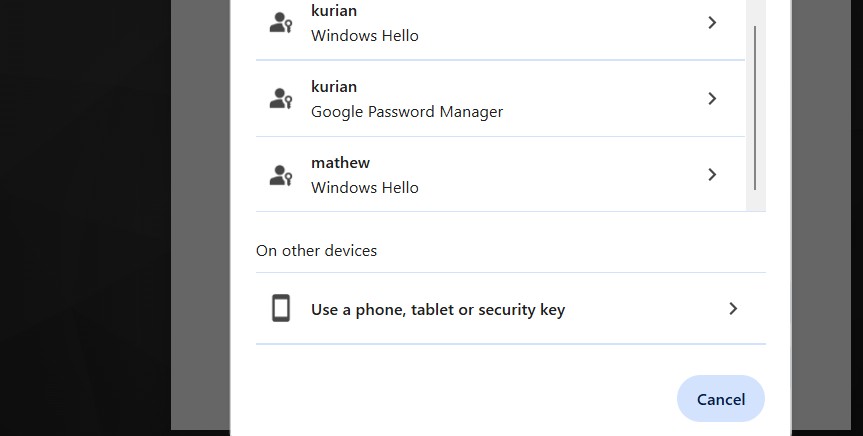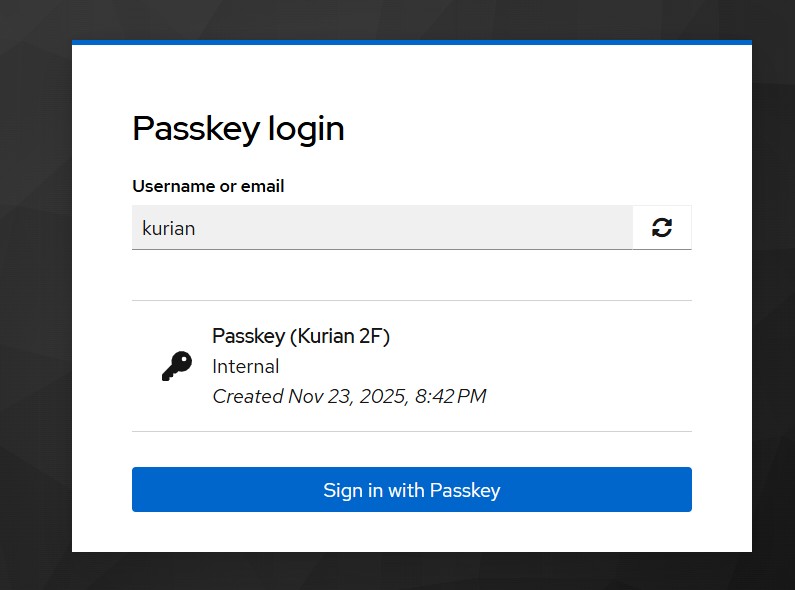Introduction
This article is a continuation of the previous one linked here. In that earlier article, we discussed how to enable passkeys as a first-factor authentication method in Keycloak. If you have not gone through it yet, it is strongly recommended that you read that article before continuing with this one.
In this follow-up, we focus primarily on using passkeys as a second factor in Keycloak.
For this article, I have used Keycloak 26.4.5. The Keycloak documentation referenced in the earlier article highlights the changes related to passkeys in Keycloak 26.4.
Brief overview
The following use cases are covered:
- Enable passkeys as first factor
- In addition to point 1, enable passkeys as second factor
- Disable passkeys from first factor and use passkeys only as second factor
We have already covered point 1 in the previous article. Here, we will look mainly at how to enable passkeys as a second factor alongside the first factor (point 2).
Configuration Steps
Registering a User for Passkey (Second Factor)
You can register new users for passkeys as described in the previous article by visiting the account console at:
- https://<skycloak_hostname>/realms/<realm_name>/account.
Then navigate to:
Account Security -> Signing In

Note: If configuring both passwordless (first factor) and passkey (second factor) for the same user, use different authentication providers during registration.
Alternatively, to enforce registration during login for new users, enable:
Authentication -> Required Actions -> WebAuthn Register -> Set as Default Action = ON
Enabling Passkeys as Second Factor
We will use the default browser flow for the test cases. To enable WebAuthn as a second factor:
Navigate to:
Authentications -> Browser flow
Change WebAuthn Authenticator from DISABLED to ALTERNATIVE, as shown in the default browser flow snippet

By default, Conditional 2FA is marked as CONDITIONAL. Whenever all conditions under it are satisfied (e.g., Condition – User Configured and Condition – Credential), the subflow is executed.
Selecting the gear icon next to Condition – Credential opens the configuration:

The default (and customizable) configuration ensures that if a passkey is already used as first factor, this condition fails, preventing execution of the second-factor WebAuthn subflow.
Disabling OTP From First Factor
If you’re continuing from the previous article, first-factor passkeys are already enabled. To revert to the default behaviour:
Navigate to:
Realm Settings -> Authentication -> Policies -> WebAuthn Passwordless Policy
Set Enabled Passkeys = OFF
This disables passkeys for first-factor authentication.
Testing the Implementation
Use Case 1 — First Factor + Second Factor Enabled
- Access your application or account console.
- Select “Sign in using Passkey” on the login page.
- Choose the appropriate passkey for the first factor.

If the authentication completes successfully, Keycloak proceeds with login.
Use Case 2 — Password + Passkey (Second Factor)
- Access your application or account console.
- Enter the username and password.
- You will then be prompted for a second-factor passkey.

Note: OTP is not configured for the user in my case
Upon successful passkey verification, login completes.
Use Case 3 — First Factor Disabled
If first-factor passkeys are disabled, the login process is the same as Use Case 2, except that in UI:
- The “Sign in with Passkey” button will not appear.
Summary
In this article, we explained how to use passkeys as a second-factor authentication method in Keycloak, including the required modifications to the default browser flow and steps for user registration.
Skycloak provides production-ready managed Keycloak hosting, helping teams avoid the complexity of maintaining and scaling Keycloak themselves.
If you’re new to Skycloak, visit the Skycloak Getting Started Guide to learn more.

